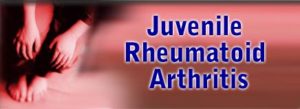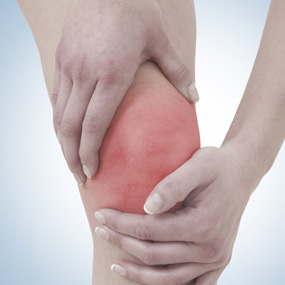Juvenile Rheumatoid Arthritis Treatment

Via asu.edu
Physicians have numerous ways to treat juvenile rheumatoid arthritis. Each child is treated depending on the severity of the RA. Many people do not know, what is RA? The main goal of treatment is to preserve the highest level of physical ability so the child can enjoy life. Physicians will attempt to relieve the childs pain, reduce the swelling to preserve the fullest range of motion of the joints and prevent any further complications that may arise. To achieve these goals a child will need to maintain an exercise schedule coupled with physical therapy and medication. Communication between parents, the child and the physician is important to help doctors prescribe the appropriate medications at the right times as well as keeping the child on a safe and therapeutic exercise schedule. Most important is to keep an open dialogue with the child as well as parents taking the initiative to learn as much as they can about juvenile rheumatoid arthritis. The more educated the parent, the less visits to the physician are needed.
JUVENILE RHEUMATOID ARTHRITIS MEDICATIONS
There are a few varieties of medications available. Nonsteroidal or NSAIDs are anti-inflammatory drugs, Corticosteroids, DMARDs or Disease-modifying anti-rheumatic drugs and biological response modifiers.
NSAIDs include ibuprofen such as Motrin or Advil, Aspirin and naproxen sodium such as Aleve. This is often the first line of drugs prescribed for Juvenile Rheumatoid Arthritis. Many physicians will not use aspirin for children as it may cause bleeding, liver issues, stomach pains or Reyes syndrome. Although in some cases, aspirin, given appropriately can help control Juvenile Rheumatoid Arthritis symptoms with minor side effects. If aspirin is not used there are other NSAIDs that may be used. Celebrex and Cataflam are just a couple of these types of drugs and have been proven to have less side effects than aspirin. Stomach pains are the most reported side effect when treating Juvenile Rheumatoid Arthritis with these medications.
DMARDs are designed to slow the progress of Juvenile Rheumatoid Arthritis but often take extended periods of time to help relieve the symptoms. Physicians may prescribe these drugs coupled with NSAIDs. Certain types of DMARDs are reported to be safe and have few side effects. Liver damage is the most serious side effect of a drug like methotrexate however, monitoring the usage of this type of drug with blood tests will help prevent any damage to the liver.
Corticosteroids are prescribed to children with severe Juvenile Rheumatoid Arthritis. These types of drugs are normally prescribed when inflammation occurs around the heart. The drug is given through IV or orally. Corticosteroids may cause weak bones and increased infections. Once the symptoms are under control the physician will most likely reduce the dosage.
JUVENILE RHEUMATOID ARTHRITIS AND EXERCISE
Keeping a child active with physical therapy is the best for juvenile rheumatoid arthritis treatment plan. It will help to develop muscle and aid in the range of motion of the affected joints. A therapist may use splints to aid in bone and joint growth.
What doctors treat Juvenile Rheumatoid Arthritis?
Rheumatology is a specialized skill and a pediatric rheumatologist is best to handle your childs treatment. This specialized profession is rare to find. Some states do not have these types of physicians so your search may not be an easy one. Inquire at your family practitioner to find out if there is a specialist in your area to help treat your child’s Juvenile Rheumatoid Arthritis.
Juvenile Rheumatoid Arthritis

Via healthline.com
Many people as well as physicians do not give enough attention to the fact that arthritis does exist in children. For the families with a child who suffers from juvenile rheumatoid arthritis, getting the facts and becoming educated regarding this condition is important. Some children may suffer for years before arthritis is diagnosed. Treatment can be more difficult if not diagnosed soon after the symptoms begin to show. These children who are not diagnosed in the early stages of the disease may suffer longer than needed as teachers or family members do not fully comprehend that juvenile rheumatoid arthritis can develop. If arthritis treatment is delayed it can be too late for some children and they may end up living their lives in a wheelchair or with other handicaps.
HOW COMMON IS JUVENILE RHEUMATOID ARTHRITIS
One in 1,000 children are affected by this form of arthritis. In most cases the disease shows up in its mild stage although, approximately 1 in 10,000 will be affected by a more severe case. In some cases children will develop acute inflammatory arthritis after a bacterial or viral infection. This form of arthritis can be quite painful but will usually subside after a few weeks or months depending on the severity of the infection. Juvenile rheumatoid arthritis is the most common form of arthritis and will usually last for years. Juvenile Rheumatoid Arthritis comes in 3 forms. They are classified by how the disease is brought on. The names of these types are pauciarticular Juvenile Rheumatoid Arthritis (no more than 4 joints are affected), polyarticular Juvenile Rheumatoid Arthritis (greater than 4 joints affected) and systemic-onset Juvenile Rheumatoid Arthritis which include inflammation of the joints coupled with rash as well as high fevers.
PAUCIARTICULAR JUVENILE RHEUMATOID ARTHRITIS
This form of the disease is defined by less than 4 joints affected after 6 months of contracting the disease. In young women the symptoms will show as a swollen ankle or knee that suddenly appears for no apparent reason, like injury. It is normally painless although it may cause the child to limp or have an unusual walk. Because arthritis symptoms include stiffness most parents or family members may not be overly concerned because the stiff joints generally feel better as the day progresses. This form of Juvenile Rheumatoid Arthritis is usually treated with non-steroidal anti-inflammatory drugs. Pauciarticular Juvenile Rheumatoid Arthritis can cause other issues however. One such issue is the child could develop inflammation of the eye which is known as iridocyclitis. This type of inflammation is painless but if not noticed or treated it could progress into scarring of the eye lens and cause visual damage and some extreme cases blindness. To diagnose iridocyclitis visit an ophthalmologist. They will use a “slit lamp” to detect this inflammation in the eye. This eye disease is common in kids but research has not shown why this form of Juvenile Rheumatoid Arthritis affects the eye. If your child is suffering from this form of arthritis you should have their eyes checked at least once every three months.
Another issue with pauciarticular juvenile rheumatoid arthritis is it could cause leg bones to grow at different rates. The knee becomes damaged and causes a more severe arthritis due to the joints rubbing. If the knee or any other joint becomes inflamed the blood supply to these joints is increased which causes one leg to grow longer than the other. This is fairly easy to recognize and should be treated right away. Treatment is normally successful thus stopping any leg length differences.
POLYARTICULAR JUVENILE RHEUMATOID ARTHRITIS
This type of Juvenile Rheumatoid Arthritis affects 4 or more joints for more than 6 months. It is more severe due to the fact that there are a greater number of joints affected and it also tends to become worse over time. Normal activities can be difficult for children suffering from this form of arthritis. For physicians, controlling the inflammation as fast as possible is the best treatment. NSAIDs, non-steroidal anti-inflammatory drugs are most commonly used to treat the inflammation. Stronger drugs may be needed to prevent permanent damage of the joints. Steroids are one way to relieve pain but these types of drugs come with side effects such as weakening of the bones.
There is a new medication for Juvenile Rheumatoid Arthritis called TNF-blockers. TNF stands for Tumor necrosis factor alpha. It is created with cells from the body that help in inflammation. Blocking the actions of TNF can help to reduce arthritis symptoms. Such drugs as Etanercept is taken by IV twice a week. Remicade, another new TNF-blocker has had positive results in the quick reduction of arthritis and can improve the quality of life for a child.
Please seek a physician if you have any concern your child may be suffering from Juvenile Rheumatoid Arthritis. With swift and proper treatment a child will usually recover from this paralyzing disease.

